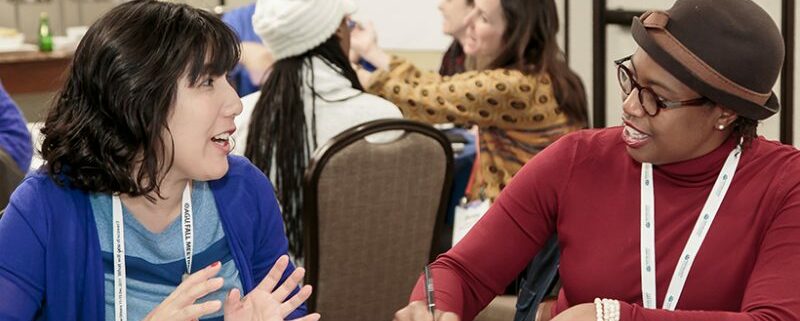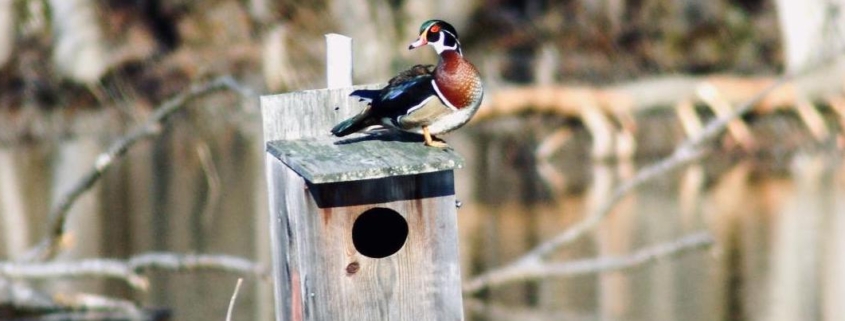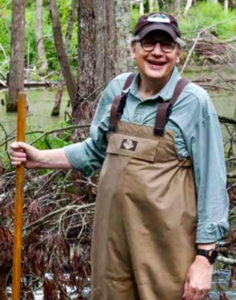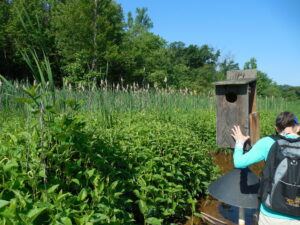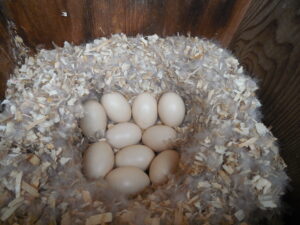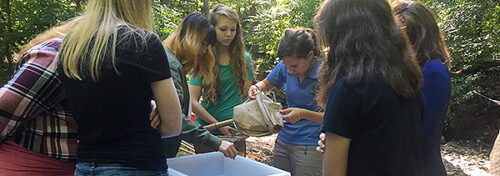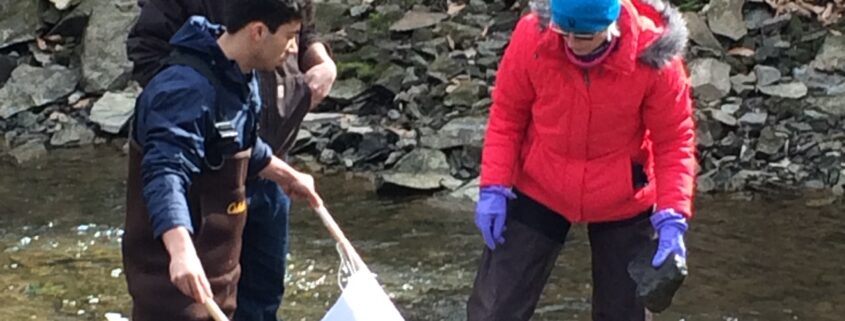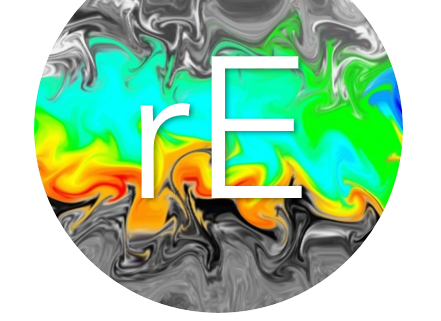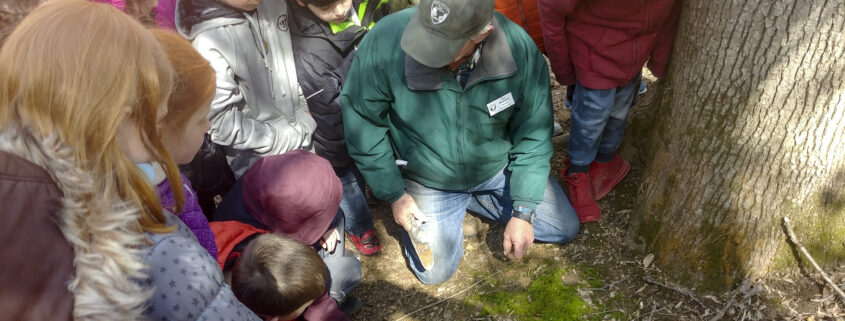How can universities and colleges advance community science?
Reposted from On the Job, a blog hosted by the American Geophysical Union
A cool thing about working at Thriving Earth Exchange is learning about excellent work being done in community science. There is a lot going on in colleges and universities, and even research-focused universities are starting to change in ways that advance and support community science. In making those changes, they can look to a history of community science in two-year colleges, agricultural extension offices, tribal colleges, and historically black colleges. I love that idea that the emergence of community science is an opportunity to recognize their long-standing leadership. How cool is it that Stanford might learn from Haskell Indian Nations University?
Here are some of the things universities and colleges are doing, distilled into a set of recommendations for any university or college seeking to advance community science. Don’t think of this as a list of hit singles, think of it as the tracks on an album, where the songs are mutually reinforcing and tell a larger story (e.g. Lemonade). That is, the biggest impact seems to come from tackling all the practices described here.
- Redefine Success. For the past 75 years, professional success in science has been based primarily on original discovery, usually measured by publications and citations. Worcester Polytechnic Institute has revised their tenure process based on Boyer’s model of scholarship, so that they recognize not only discovery and teaching, but also application and engagement. West Chester University has long allowed faculty to shift the relative weight of service, teaching, and research in their tenure portfolios, which means faculty who focus on community science can weight that higher. At University of Washington, the dean of the college of the Environment invites new faculty to write one less paper, and instead spend that time working with her team to translate their work into real world impact.
- Learn to Count Impact. I am convinced that one of the reasons papers count is because we know how to count papers. How can we shift from impact factor to societal impact? Let’s support research into the benefits of community-engaged approaches, including their benefits for communities, faculty and students. I think a promising place to start is around the idea of community science literacy, which emphasizes a community’s capacity to use science by linking it with their members other skills and assets. This framing is powerful because it’s asset-based and it includes both concrete accomplishment and future potential.
- Organize around priorities, not disciplines. Community priorities don’t map onto single disciplines, so being good at community science means being multidisciplinary. Colleges can make interdisciplinary work easier though centers that bring together faculty and students from many departments, like the School for Innovation and the Future of Society at ASU or the Haskell Environmental Research Center. Centers like these can also offer seed-funding, new kinds of course work and preparation, project management support, and coordinate community partnerships. For communities, these centers can help communities avoid getting lost in university bureaucracy.
- Build Institutional connections to community organizations. For community science to succeed at scale and last over time, a university or college has to build strong, trusting relationships with community groups. A long-term, university or college-wide commitment allows a college to reach across disciplines, engage different people over time, present a single point of contact for managing projects and relationships, and guide the institutional evolution necessary to support community science. Of course, motivated faculty and students will build relationships anyway, but without university support and alignment, those relationships disappear when the students or faculty move on or risk being undermined by actions in another part of the university. An institutional leadership can look like a vice-chancellor for community engagement, or even a presidential commitment to community partnership. UC Davis has a Center for Citizen and Community Science that serves as hub for both doing and studying community engagement.
- Build the infrastructure for community science. One of the things I often hear is that community science is hard to do and takes a long time to get results. Numerical modeling is also hard and it also takes a long time to get results, but we make it easier by providing infrastructure (computing centers, for example). What if colleges and universities invested in infrastructure for community science? Infrastructure includes space to hold community meetings, hubs in local neighborhoods, online engagement tools, workplace flexibility that allows people to manage engagement around community work schedules, help navigating languages and cultures, solid partnerships with community-serving organizations, and administrative services that support community engagement (see point 8).
- Educate people to do community science. Make it a part of every science graduate program and encourage proficiency before graduation. Create opportunities to learn and practice community ethics, community engagement, cultural humility, conflict management and listening as a research skill. There are fields that do this well already – public health, human geography, ecology, and anthropology – other sciences can learn a lot. Offer mentorship program around community science. For physical scientists, NSF has a new program that pays students and advisors to do internships – why not internships in community science? One thing that would be especially cool is classes where community leaders and scientists learn community science together. Cornell Lab of Ornithology has a remarkable project, the NOISE project, that does exactly that.
- Make equity the foundation of community science. Science is already influenced by and a partner in the implicit biases and systemic inequities that are part of the larger world. Unless you are designing with equity in mind, you’re probably perpetuating inequity. Equity as a foundation of community science means respecting, welcoming, and advancing all communities. It also means being a partner to communities in their efforts to tackle inequity and looking for ways science can help elevate community voices and perspectives. Institutions that were designed to advance equity – Tribal Colleges, HBCU’s – are the obvious exemplars, but I think any institution, can and should, make a commitment to equity.
- Share power, money and decision-making. Doing community science means that institutions with power and privilege, universities and colleges, will make a conscious decision to share that power and privilege. The most successful community science projects share the budget so that community organizations benefit as directly as the science institution, build in fair compensation for the expertise and participation of community members, have well-defined leadership roles that are shared by community leaders and scientists, and have clearly outlined processes for making decisions. This backed up by open agreements about intellectual property, community review boards, and shared ethical principles of engagement. One thing I would love to see is research dollars going to community groups, so they can invest in the research to answer their questions. We should also look at how resources are shared among colleges and universities. Will new funds for community science go to smaller schools that have been doing it well forever, or to high-profile institutions that are new to community science?
The cool thing about all of these practices is that they are doable. In fact, some institutions are already doing them – as revealed in the recent AGU Union Session. What that means is that the revolutionary part of the community science revolution isn’t knowing how to do community science, or even finding people who are doing community science. The revolutionary part is changing structures and systems so that we encourage, facilitate, and reward community science. I think universities and colleges have an opportunity to lead that revolution, and some already are. What do you think?
Raj Pandya, Director, Thriving Earth Exchange, American Geophysical Union


